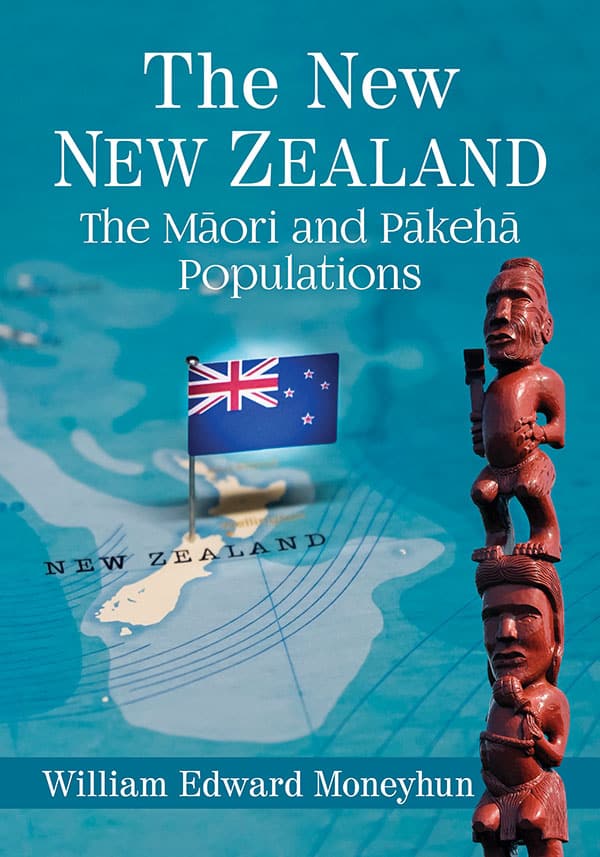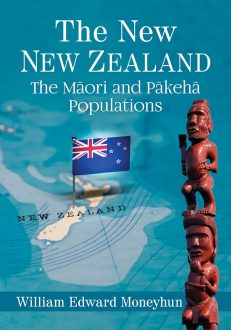The New New Zealand
The Māori and Pākehā Populations
$45.00
In stock
About the Book
Today’s New Zealand is an emerging paradigm for successful cultural relations. Although the nation’s Māori (indigenous Polynesian) and Pākehā (colonial European) populations of the 19th century were dramatically different and often at odds, they are today co-contributors to a vibrant society. For more than a century they have been working out the kind of nation that engenders respect and well-being; and their interaction, though often riddled with confrontation, is finally bearing bicultural fruit. By their model, the encounter of diverse cultures does not require the surrender of one to the other; rather, it entails each expanding its own cultural categories in the light of the other.
The time is ripe to explore modern New Zealand’s cultural dynamics for what we can learn about getting along. The present anthropological work focuses on religion and related symbols, forms of reciprocity, the operation of power and the concept of culture in modern New Zealand society.
About the Author(s)
Bibliographic Details
William Edward Moneyhun
Format: softcover (7 x 10)
Pages: 251
Bibliographic Info: 35 photos, appendices, notes, bibliography, index
Copyright Date: 2020
pISBN: 978-1-4766-7700-2
eISBN: 978-1-4766-3834-8
Imprint: McFarland
Table of Contents
Acknowledgments vi
A Brief Guide to Pronouncing Māori Words 1
Preface 3
Pivotal visits 3
Mining the resources 5
The chapters 8
Introduction 9
A synergistic synthesis of cultures 9
Hiwi Tauroa’s musing 10
The emerging paradigm 11
Chapter One. Aotearoa/New Zealand 13
Before you begin, consider… 13
Some notes on the name 13
A peek at the population 15
A review of the religion 18
A glimpse at the government 24
A look at the languages 27
A handle on the history 30
Chapter Two. Understanding Symbols 38
A world of symbols 38
The birth of a symbol 43
The whare tipuna as a symbol 48
The whare karakia as a symbol 55
Whare meets whare 60
Chapter Three. Reciprocity 67
Western reciprocity 67
The economic bias 72
Māori utu 74
Utu and the West 77
The complexity of Pākehā reciprocity 78
A social uncertainty principle 80
The reinterpretation of culture 82
Chapter Four. Power 84
The elements of specific power 84
The terms of general power 85
Power-dependence and the process of secularization 89
The spiritualized Māori 90
The secularized Pākehā 96
Synergistic potential 99
Chapter Five. Culture and Religion 101
The way we are 101
Culture 104
Religion 106
The complementarity of culture and religion 111
Māori culture and religion 112
Pākehā culture and religion 118
Religio-cultural synergy 120
Chapter Six. Some Principles of Cultural Interchange 122
A time to reflect 122
The dynamic encounter of meaning systems 123
Cultural complexity and abstractness 125
The beginning of cultural dialogue 128
The terms of cultural reconceptualization 130
The nature of cultural reconceptualization 133
Reification and cultural authenticity 136
Chapter Seven. Io 139
Here an Io, there an Io 139
The telltale twitch 141
The Polynesian Society and the search for “the historical Io” 143
A matter of interpretation 150
The higher critical school and “the Io of faith” 153
“The Io of culture” 156
Is Io really God? 160
Chapter Eight. The Up Over of the Down Under 165
Cultural authenticity: A necessary reprise 165
The cognitive function and the address to education 170
The moral function and the address to injustice 175
The aesthetic function and the address to endurance 179
The religious dimension 184
Postscript 186
Appendix A: Maps for Aotearoa/New Zealand’s World Location 189
Appendix B: A Present-Day Marae 192
Appendix C: New Zealand Bill of Rights Act 1990 195
Chapter Notes 209
Bibliography 223
Index 235
Book Reviews & Awards
“Well-researched…meticulously outlines many of the central features of New Zealand’s bicultural past, much of his book consists of a dense, theoretical analysis of symbolism, culture and religion, the nature of power and reciprocity, and the principles of cultural exchange. …recommended”—Choice





